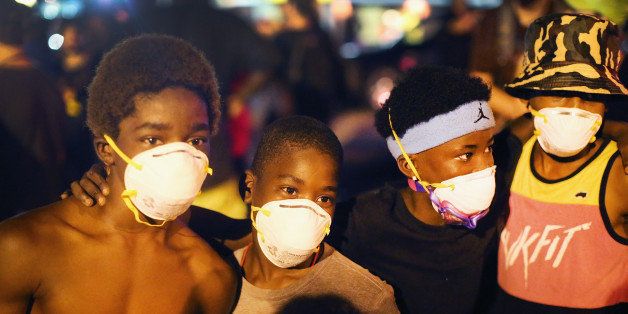
"Unless our children begin to learn together, there is little hope that our people will ever begin to live together." Justice Thurgood Marshall penned these words 40 years ago, as part of his stirring and prophetic dissent in Milliken v. Bradley. In Milliken, a 5-4 majority of the United States Supreme Court virtually prohibited bussing across school district lines to desegregate metropolitan areas, which in many ways marked the Court's -- and the country's -- turn away from efforts to integrate schools.
As we head into another school year, and especially in light of recent events, it is worth pausing to consider Marshall's warning. The tragedy in Ferguson, Missouri, seems sad proof of Marshall's point about the connection between learning and living together. The police officer, Darren Wilson, like most white students in this country, attended a high school that was almost entirely white. Michael Brown attended a school that was almost entirely black. Much more, of course, was involved in the shooting than the racial composition of the schools attended by Wilson and Brown, but it is hard to shake the feeling that a lack of contact and understanding -- outside of confrontations -- between white police officers and black citizens lies at the heart of this and too many other tragic encounters. One important place where productive encounters could occur is within schools, but for the last 40 years, white and black students learning alongside one another has been the exception rather than the rule.
Recent headlines have also pointed out that, for the first time in our country's history, white students no longer constitute a majority of the public school population. Our school children, collectively, are a remarkably diverse group and becoming more so by the year. Yet most of them still attend schools that are either predominantly white or predominantly minority.
It seems an unwise strategy to have mostly separate schools in an increasingly diverse country. Diversity is not likely to be a neutral fact anytime soon, which can simply be ignored. Instead, diversity can remain an increasing source of division or become a source of strength. Where residential and social separation along lines of race and class is tolerated, if not encouraged, our differences tend to spawn division and hostility, based on ignorance, prejudice, and stereotype. If cultivated and nurtured, on the other hand, diversity can be a source of inspiration, understanding, and friendship, as superficial differences like skin color or ethnic background fade in light of stronger bonds forged around similar interests and common hopes for the future.
There is some cause for optimism. For the past two decades, efforts to promote diverse K-12 schools have taken a back seat to a singular focus on raising academic achievement, primarily as measured by test scores. But a shift is occurring. It's still early, but it appears that parents and those of us in the education world are beginning to awaken from the fog of test-based accountability and the often implicit assumption that test scores alone capture the total value and worth of public education.
There is increasing recognition that public schools should provide a complete education, one that is academically strong, obviously, but one that also prepares children to be socially and emotionally competent, to be ethical and moral, to work well with others, and to be engaged and tolerant citizens. Parents, teachers, and principals are rightly concerned that an obsession with test scores has blinded us to our obligation to teach children not only to be smart, but also to be good. This is a healthy development, which actually marks a return to the roots of public education: public schools from the very beginning were meant to socialize students as well as prepare them academically.
As we begin to recognize and embrace again the larger purposes of public education, there is some hope that encouraging and nurturing diversity within schools will no longer seem like a frill or a distraction from the push to increase test scores. Test scores are clearly important, but we should expect more from public schools. We should expect that they will help prepare students to become citizens who can live peacefully and productively with one another.
Diverse schools can help fulfill that goal. Students should have more opportunities to learn alongside those whose lives and backgrounds are different from their own, not just to understand their differences but to notice how much they have in common. Diverse schools don't guarantee understanding, empathy, and compassion among students from different racial, ethnic, and socioeconomic backgrounds. Real work is needed within schools to fulfill the promise of diversity. Yet diverse schools at least offer opportunities for genuine learning and understanding across boundaries that too often seem impermeable. Diverse schools offer the hope that, by learning together, our remarkably diverse children and grandchildren will not simply be able to live together, but will look forward to doing so.